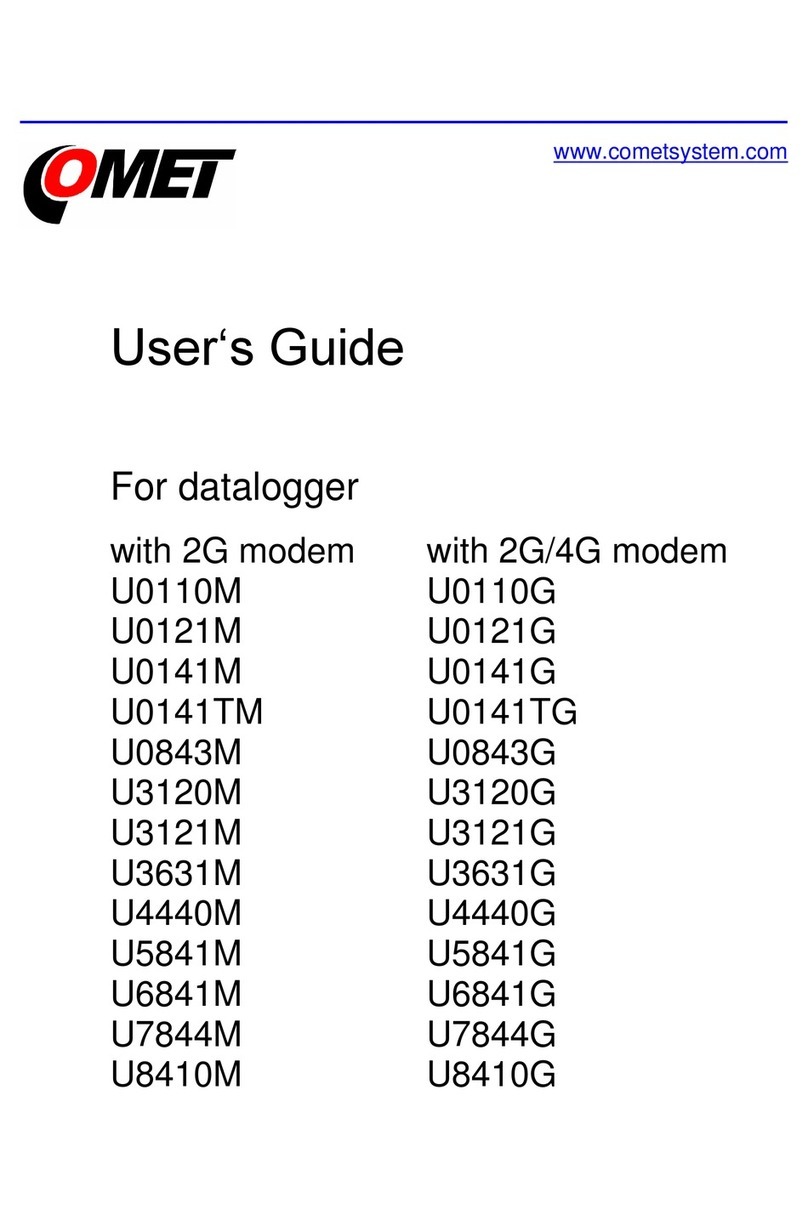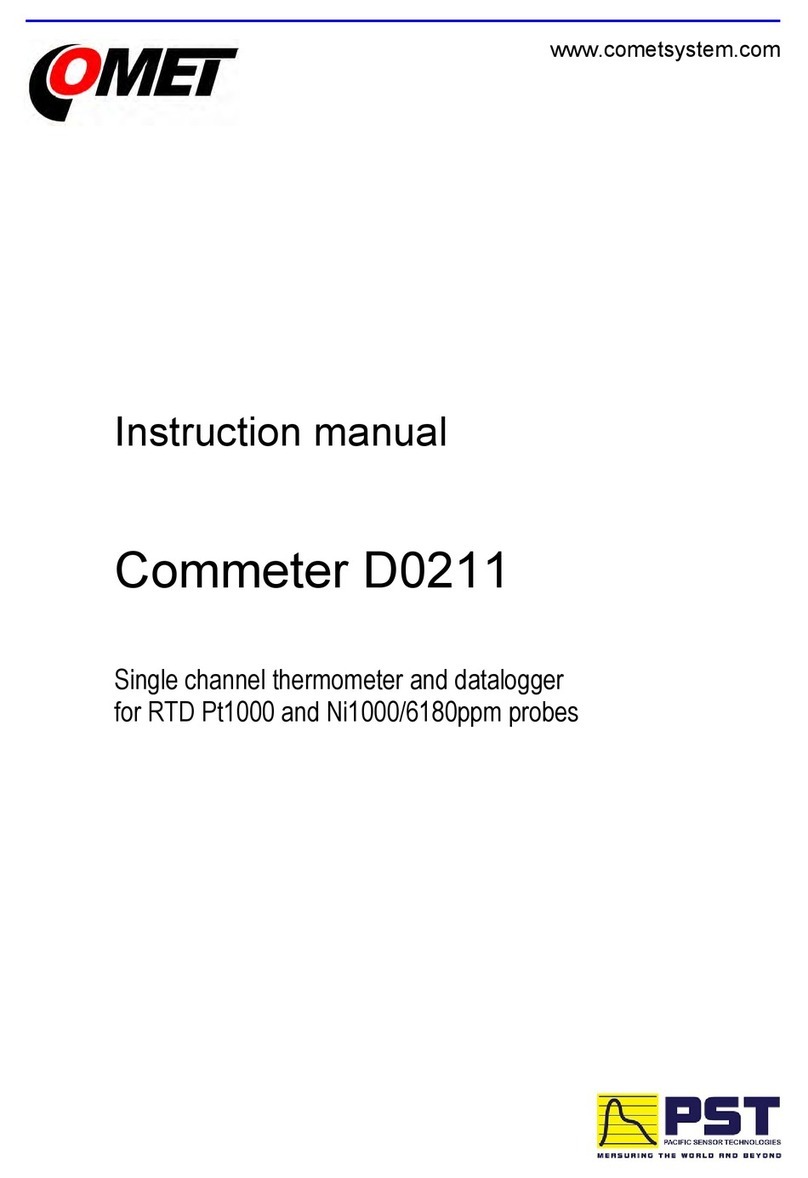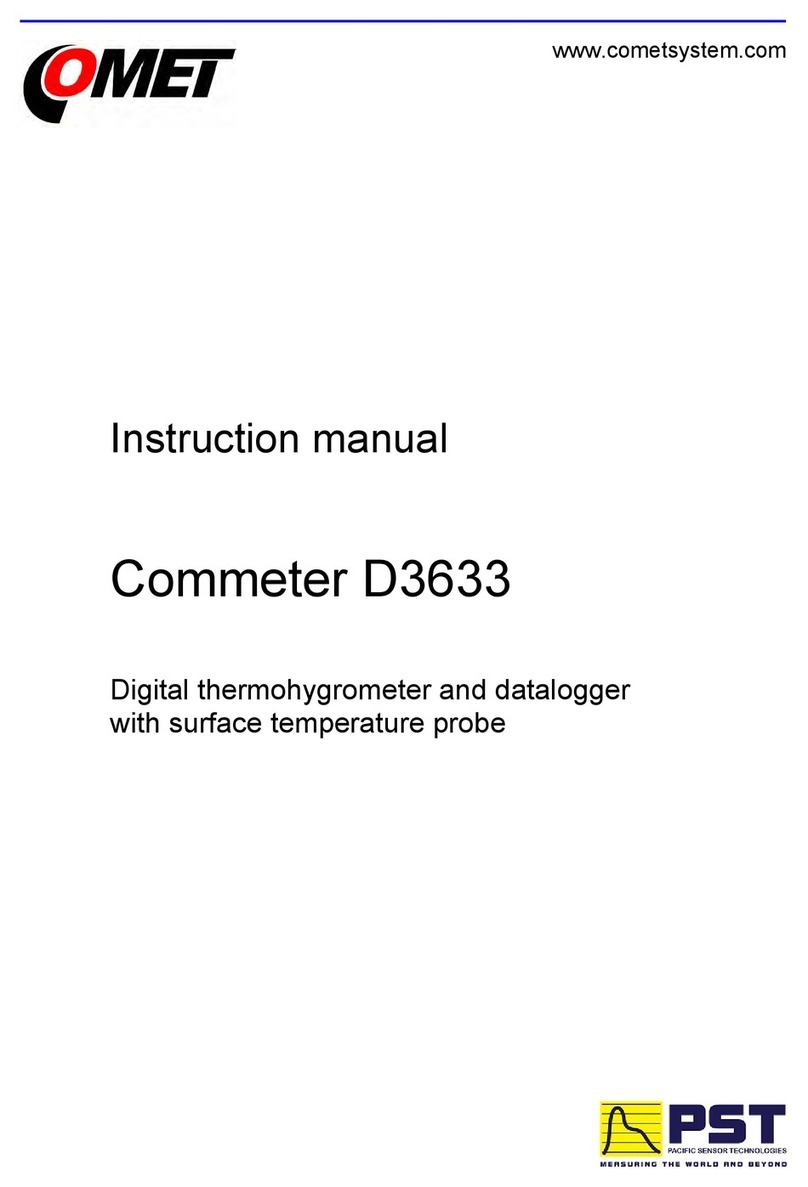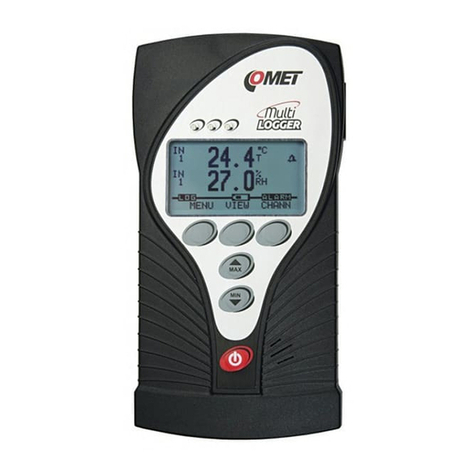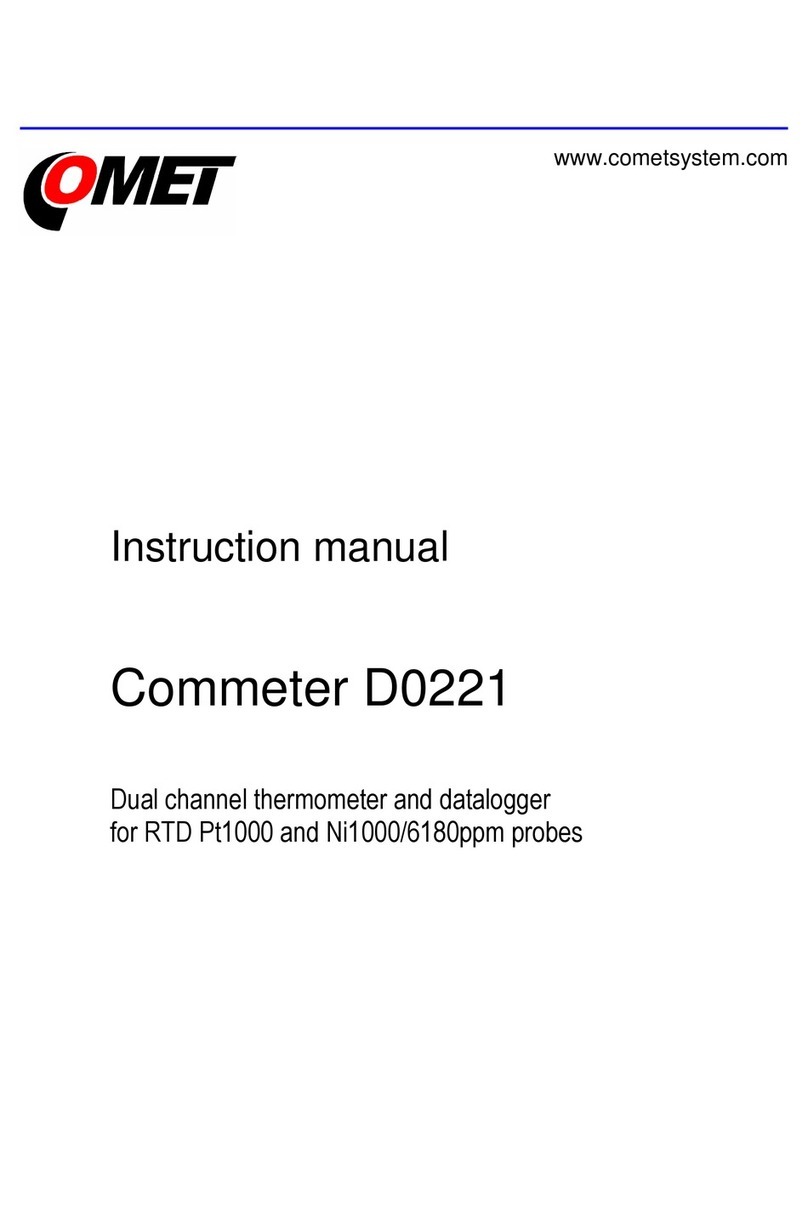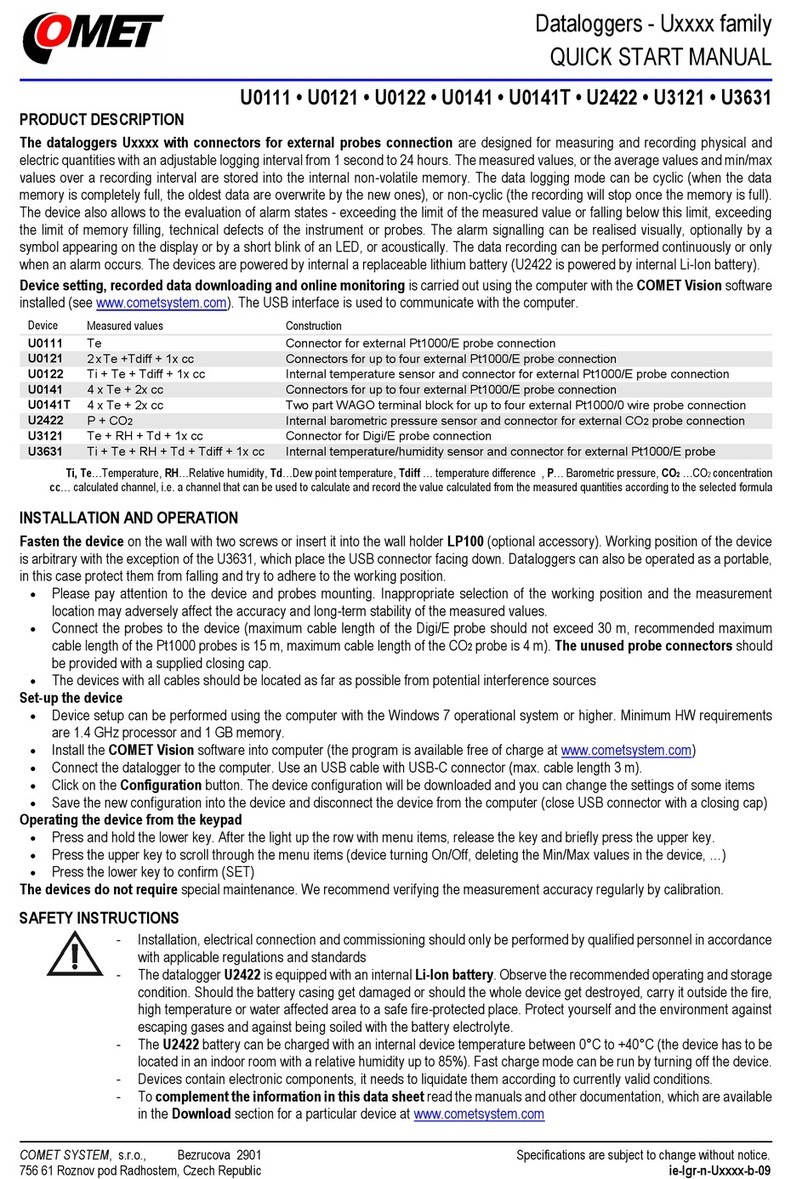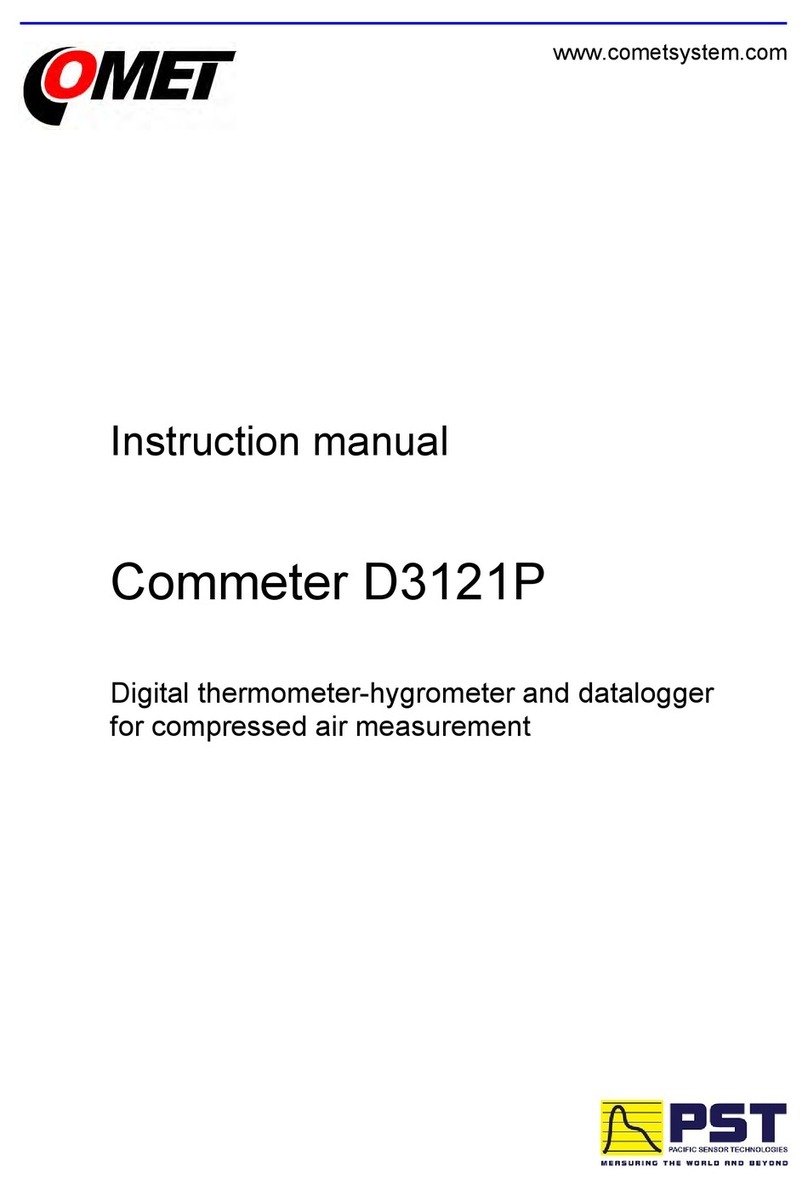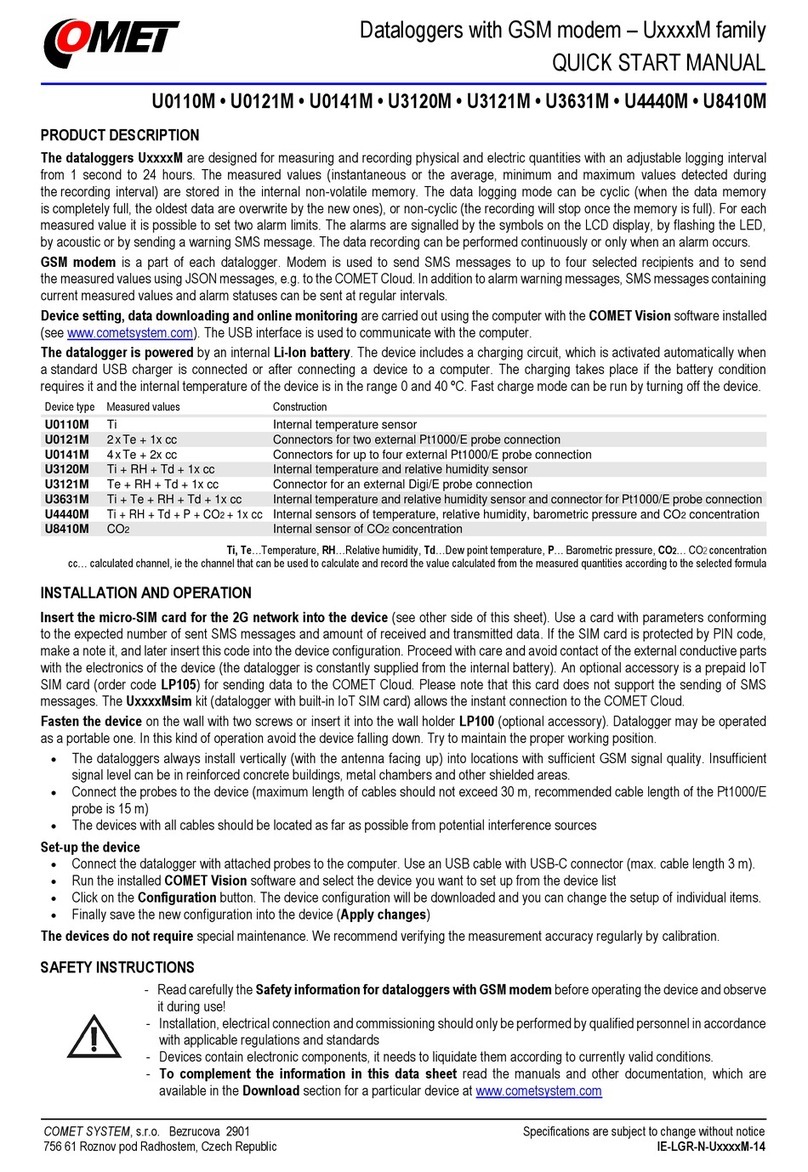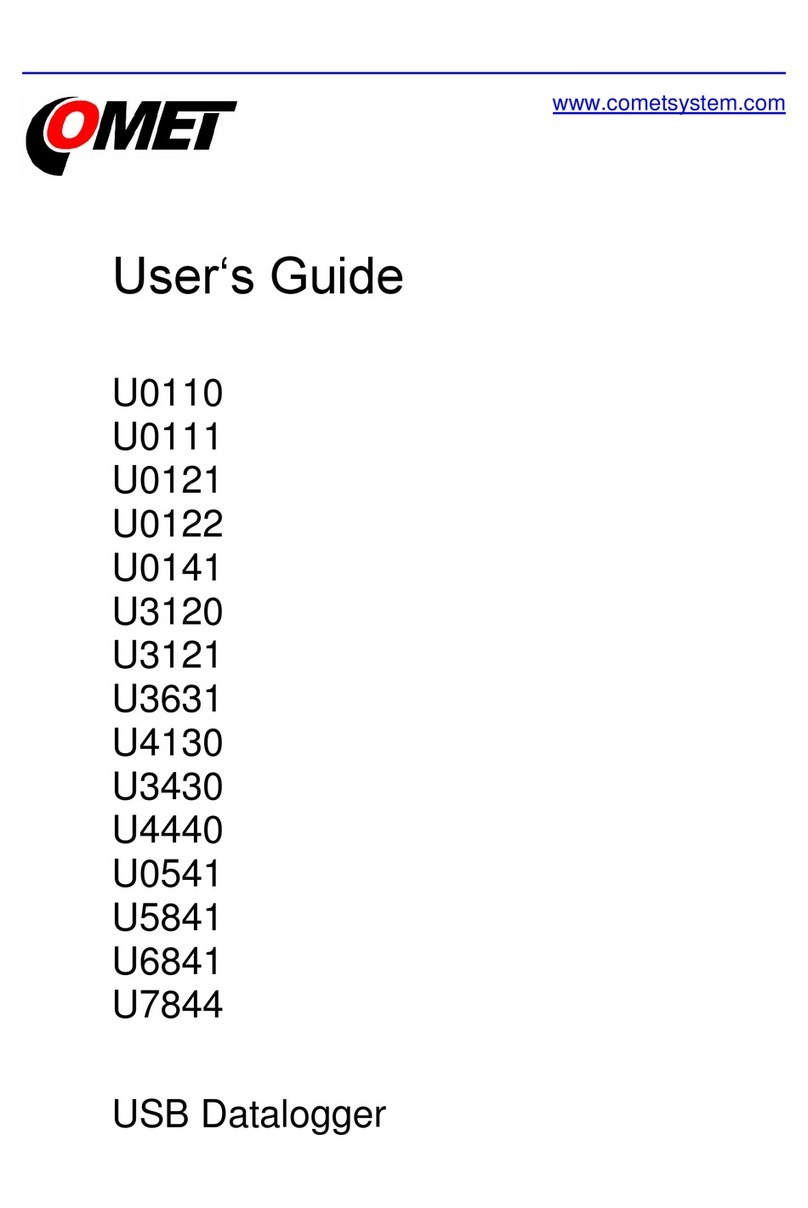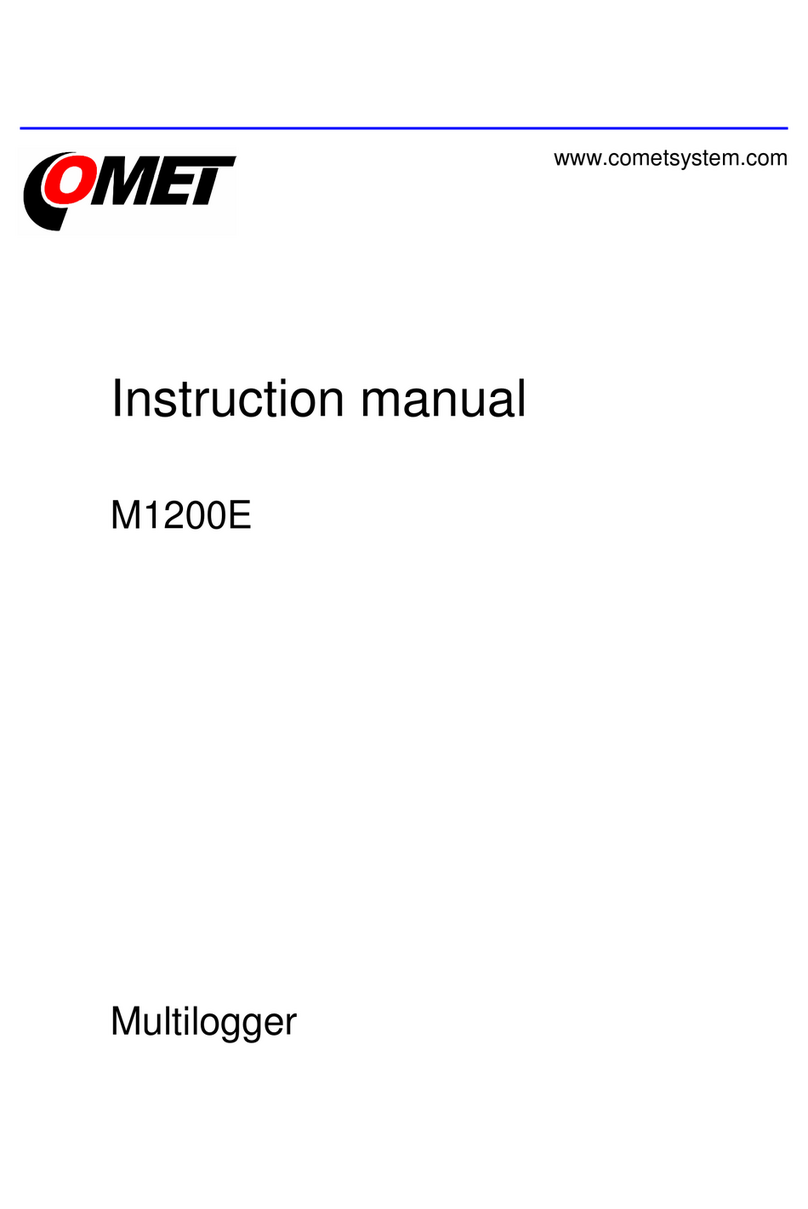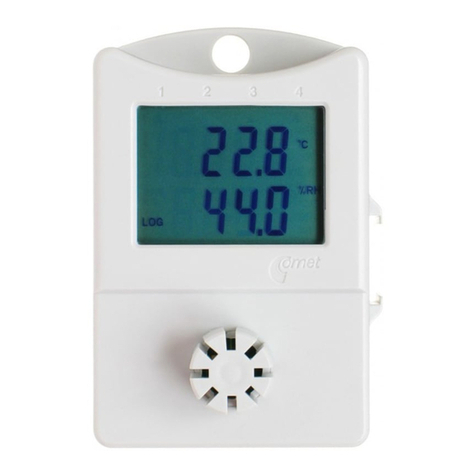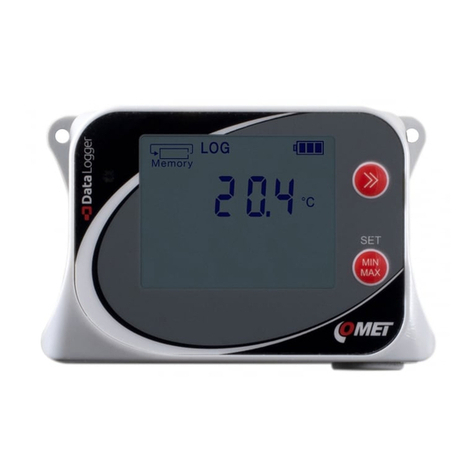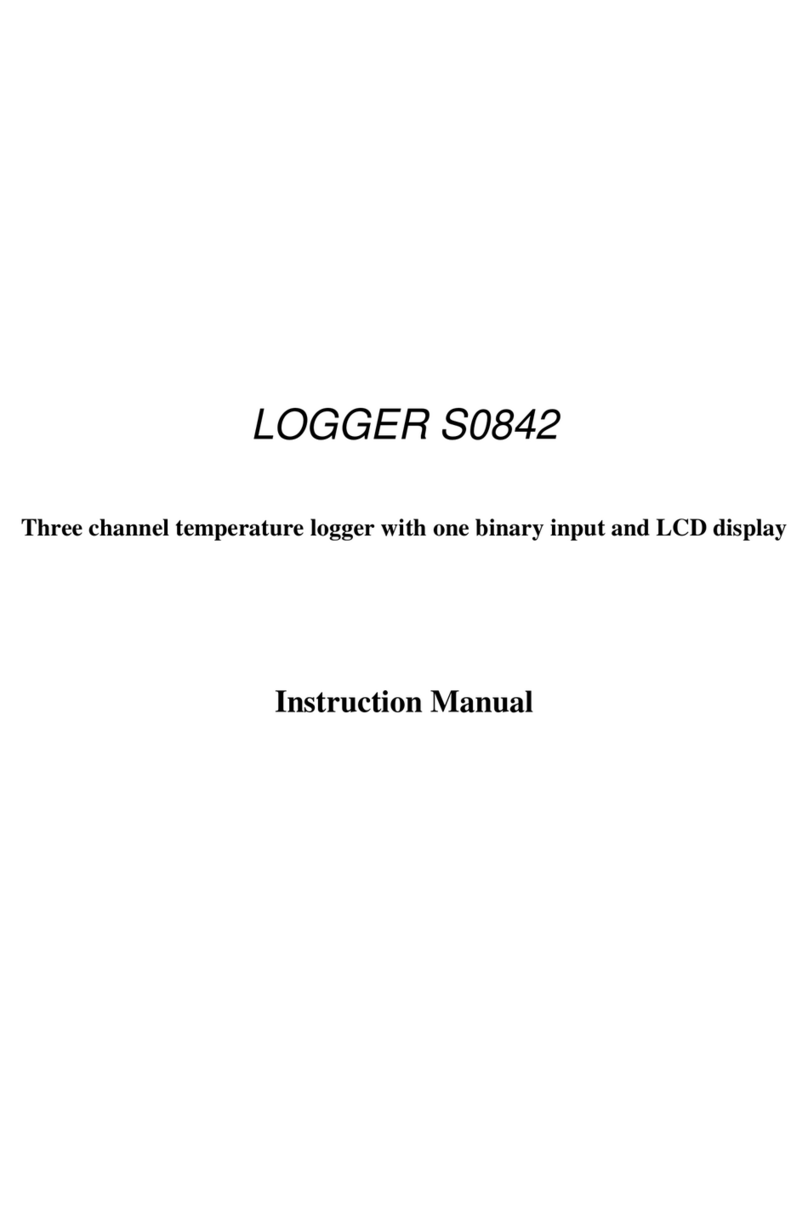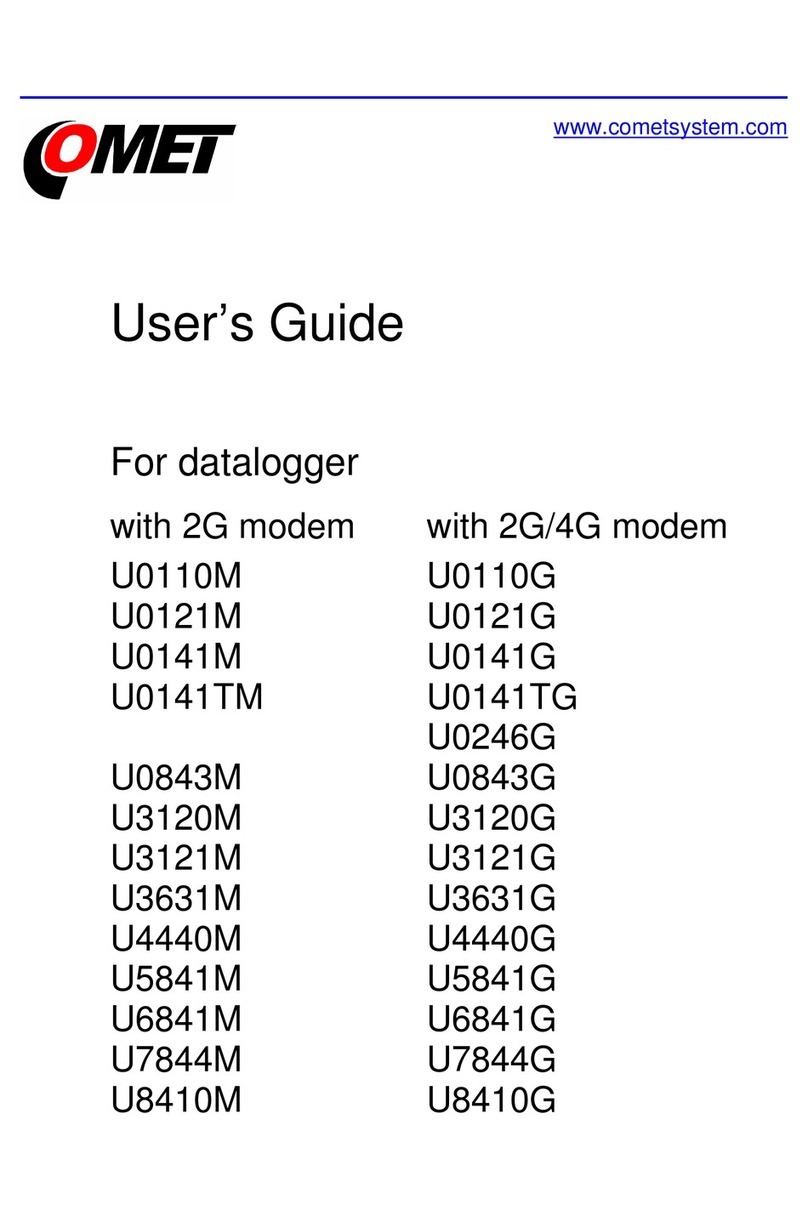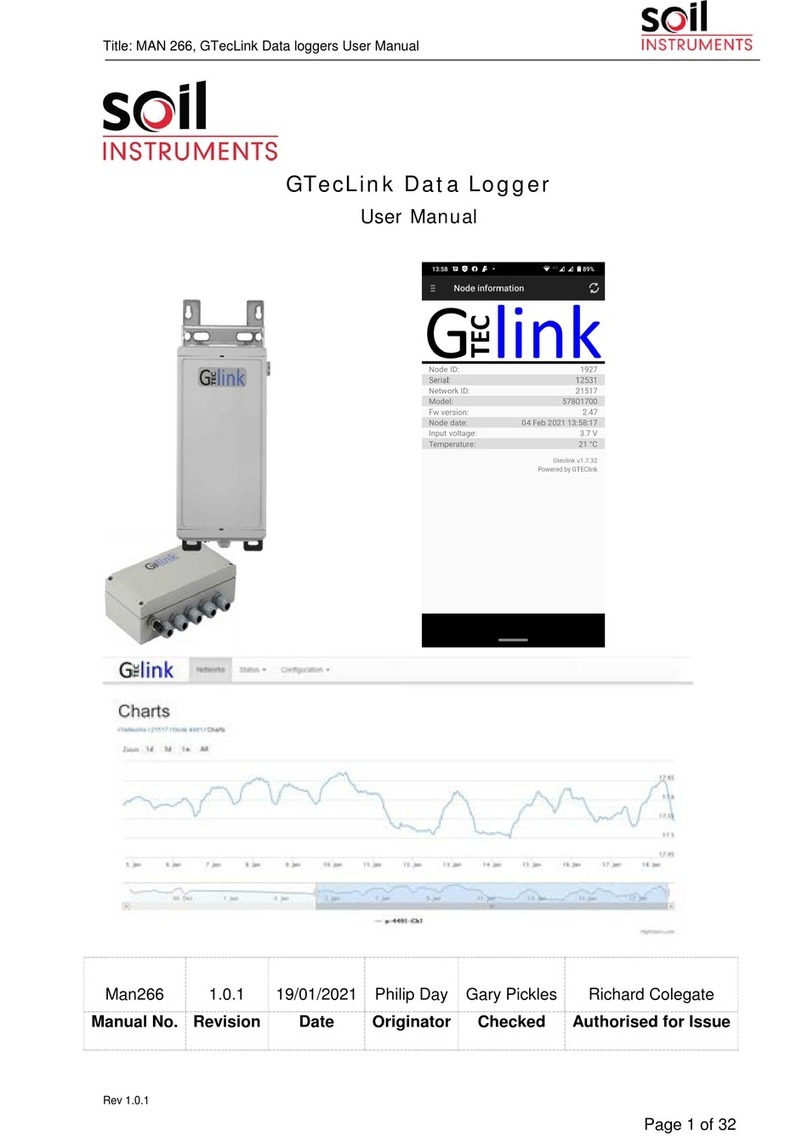IE-LGR-Uxxxx-16 9
Running the device
•After the set-up - Disconnect the device from the computer and close
the USB connector with a closing cap. Check that all connectors are
tightened properly. The device may be operated with a permanently
connected USB cable. In this case the ingress protection will be reduced
to IP 20.
•Operating the device by means of keys - In the main display mode you
can switch over between individual channels and the display mode
Current / minimum / maximum values by means of the keys. By pressing
a certain key combination, you will enter a menu in which you will be able
to switch the device on or off, to delete the Min/Max values and to disable
the alarm signalling. For more information, refer to the chapter „Operating
the datalogger from the keypad“.
•Charging the batteries - applies only to models with a CO2sensor
(contains Li-Ion accupack), other devices cannot be charged. An internal
charger will be activated immediately after connecting the USB charger
or after connecting the datalogger to the computer. The datalogger
contains an intelligent charging circuitry evaluating the battery condition
and internal temperature. Charging time depends on the current battery
discharge status. The battery charging process will be initiated only
in the case that the battery voltage is low and the internal temperature
ranges between 0°C and 40 °C. Use the recommended charger type only.
During the charging period the ingress protection is reduced to IP 20;
therefore, do the charging under room (or similar) conditions only.
If the battery is very low, the charging process may be terminated with
an error message. In such a case contact the datalogger vendor to apply
for battery replacement. During the battery charging period the internal
temperature of the device may be slightly raised, which can, for a short
period of time, adversely influence themeasurement values ofthe internal
sensors. Therefore, the charging speed with the power on is
deliberately slowed down to avoid excessive measurement influence.
If you want to charge the device as soon as possible, turn it off first. When
the device is turned off, the fast-charging mode is automatically activated.
Fully charged battery is indicated on the display of the device usually
within 6 hours.
•Maintenance and regular checks - for a reliable functioning of the device
it is advisable to perform its regular check-ups. For more details refer to
„RECOMMENDATIONS FOR OPERATION AND MAINTENANCE”.
Device disposal procedure
Screw-off the rear cover of the datalogger, take out the battery. The device
is disposed of as electronic waste. The battery must be disposed of as
hazardous waste.



